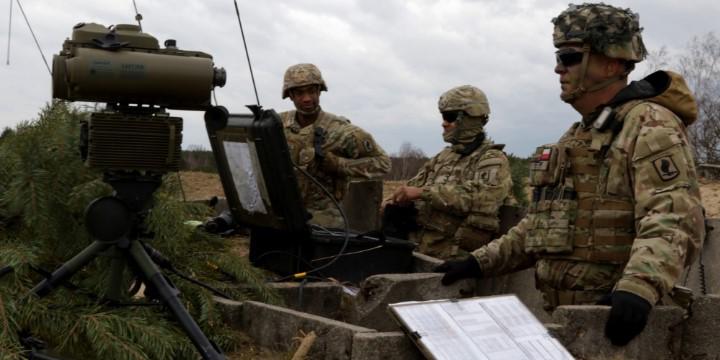Army Research Aims at Broad MDO Achievements
The U.S. Army’s Program Executive Office for Intelligence, Electronic Warfare and Sensors (PEO IEW&S) is striving for an entire new generation of technology-based capabilities to help the service achieve multidomain operations (MDO). And unlike previous developmental models, the office is moving toward collaborative capabilities in a multisystem approach.
Helping in this effort is the office’s creation of a new PEO IEW&S Integration Directorate. This recognizes that signals intelligence (SIGINT), electronic warfare, intelligence and cyber operations constitute a single element of Army MDO requirements.
Michael Schwartz, chief engineer, Army PEO IEW&S, explained that sensor and sensor processing systems across the PEO portfolio enable ISR, intelligence production, integrated base defense and force protection. Speaking during the TechNet Augusta Virtual Solutions Series airing February 16-17, Schwartz described the office’s approach and some key efforts aiming for MDO.
We’re prioritizing this ongoing integration of SIGINT, intelligence, EW and cyber operations. It’s critical from a materiel, organizational and doctrinal perspective.—Michael Schwartz, chief engineer, Army PEO IEW&S #AFCEATechNet
— Bob Ackerman (@rkackerman) February 16, 2021
“Our strategic focus is on providing never done before capabilities supporting Army modernization capabilities,” he pointed out. “We need the strategy to support the commander’s needs to see, aggregate, understand in this electromagnetic spectrum, and it’s really complex. We need to be able to see ourselves, and we need to see the threat. We need to do it across multiple domains simultaneously and collaboratively against a target.”
Previously separate disciplines are being developed in a collaborative fashion so they can operate the same way on the battlefield. “We’re prioritizing this ongoing integration of SIGINT, intelligence, EW and cyber operations. It’s critical from a materiel, organizational and doctrinal perspective,” he declared.
One approach key to achieving this and other goals is the use of open-source software and open system architectures. Schwartz explained that this approach will provide greater adaptability, quicker adoption of new capabilities and lighter-weight sensors vital to mobility. And, it will enable greater participation by industry.
“We’re getting away from proprietary architectures and proprietary software as much as possible,” he said.
Schwartz cited several programs that will contributed to MDO. The multifunction electronic warfare (MFEW) program is the Army’s first organic brigade electronic attack asset designed to be mounted on the MQ-1C Grey Eagle unmanned air vehicle (UAV). “Air-based solutions are very important as we move toward our competitors in conflict,” he offered. “The ability to see and affect threats farther than we have been using air-based versus ground vehicle platforms, for example, becomes critical in an MDO environment.”
We need to be able to see ourselves, and we need to see the threat. We need to do it across multiple domains simultaneously and collaboratively against a target.—Michael Schwartz, chief engineer, Army PEO IEW&S #AFCEATechNet
— Bob Ackerman (@rkackerman) February 16, 2021
The multidomain sensor system (MDSS) will provide the Army with a set of capabilities to provide new airborne sensing capabilities to include manned and unmanned aircraft as well as other nontraditional systems. And, the terrestrial layer system, or TLS, will provide the Army’s next-generation ground EW cyber and intelligence capabilities. Ground commanders will have an organic capability to keep track of an enemy, he stated.
The multidomain sensor system [MDSS] will provide the Army with a set of capabilities to provide new airborne sensing capabilities to include manned and unmanned aircraft as well as other nontraditional systems.—Michael Schwartz, chief engineer, Army PEO IEW&S #AFCEATechNet
— Bob Ackerman (@rkackerman) February 16, 2021
The office is working toward achieving Army MDO by 2028. Schwartz reiterated that industry will play a big role in these efforts, and he cited one in particular.
“We need industry engaged on this telling us where we’re wrong.”
We need industry engaged on this telling us where we’re wrong.—Michael Schwartz, chief engineer, Army PEO IEW&S #AFCEATechNet
— Bob Ackerman (@rkackerman) February 16, 2021





Comments